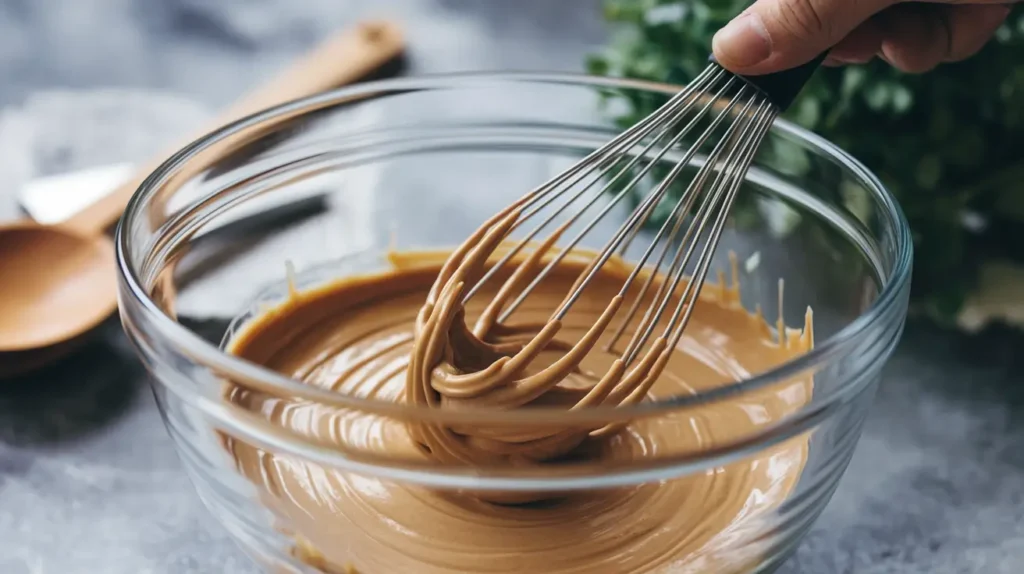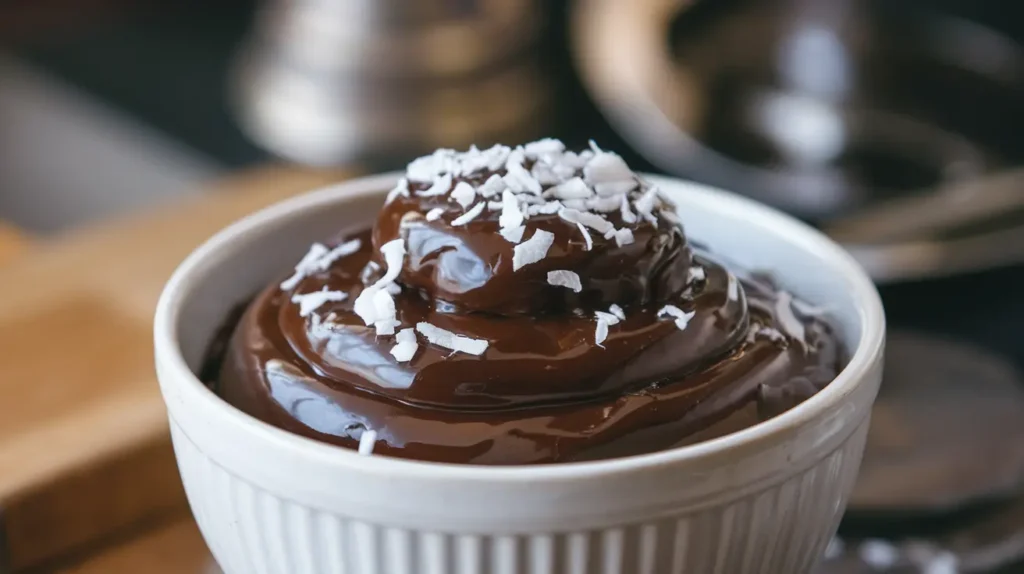Table of Contents
Icing Without Powdered Sugar became my kitchen lifesaver one late-night baking spree when I ran out of powdered sugar mid-cupcake decorating—I panicked! But then I grabbed some granulated sugar, got creative, and whipped up a silky glaze that saved the day. The kitchen smelled of vanilla and caramel as I drizzled it on, and my friends couldn’t believe it wasn’t the usual stuff. Since then, I’ve made countless icings this way for cakes, cookies, and more. Ready to learn how to make Icing Without Powdered Sugar? Let’s get started!
Why Icing Without Powdered Sugar Is My Go-To
I’ve frosted my share of desserts, but discovering Icing Without Powdered Sugar opened a whole new world for me. It’s not just a backup—it’s a game-changer. I’ve watched bakers’ eyes widen when I tell them you can get that creamy texture with pantry staples like granulated sugar or honey. It’s versatile, healthier in some cases, and lets me play with flavors. Trust me, mastering Icing Without Powdered Sugar is my kitchen hack—perfect for any time you’re out of the usual or want something new!
The Magic of Icing Without Powdered Sugar

Icing is the sweet crown of any dessert—think cakes, cookies, or pastries—adding flavor, sweetness, and that polished look. Traditionally, powdered sugar is the star because it dissolves fast for a velvety finish. But here’s the secret: you don’t need it! With alternatives like granulated sugar, brown sugar, or natural sweeteners, you can create Icing Without Powdered Sugar that’s just as smooth and delicious. It’s all about the right techniques—let’s explore how to make it happen!
What You’ll Need for Icing Without Powdered Sugar
Here’s the lineup for Icing Without Powdered Sugar—everyday ingredients that turn into frosting magic. You’ve probably got most in your pantry! Full measurements are in the recipes below—I’ve got you covered.
- Granulated Sugar: A kitchen staple—blend or dissolve for smoothness.
- Brown Sugar: Adds a caramel depth—great for richer icings.
- Honey or Maple Syrup: Natural sweetness with a syrupy vibe.
- Coconut Sugar: A healthier pick with an earthy tone.
- Extras: Butter, milk, cream cheese, or vanilla for creaminess.
Tools to Gather
- Blender or Food Processor: Grinds sugar finer.
- Hand Mixer or Stand Mixer: Smooths it out.
- Saucepan: Dissolves sugars with heat.
- Spatula & Mixing Bowls: For thorough mixing.
- Measuring Cups & Spoons: Precision matters.
5 Easy Recipes for Icing Without Powdered Sugar

Let’s dive into making Icing Without Powdered Sugar with these foolproof recipes. Each one’s a gem—whether you’re after a glaze or a frosting, I’ve got you!
Recipe 1: Granulated Sugar Glaze
- 1 cup granulated sugar
- ¼ cup water
- 1 tsp vanilla extract
In a saucepan, heat sugar and water over low, stirring ‘til dissolved. Cool slightly, add vanilla, and blend for smoothness. Drizzle over cookies or bundt cakes—simple and sweet!
Recipe 2: Brown Sugar & Butter Frosting
- 1 cup brown sugar
- ½ cup butter
- 3 tbsp milk
- 1 tsp vanilla extract
Melt butter and brown sugar in a saucepan, add milk, and whisk ‘til smooth. Cool slightly, stir in vanilla, and spread on chocolate cakes or cinnamon rolls—caramel heaven!
Recipe 3: Honey or Maple Syrup Drizzle
- ½ cup honey or maple syrup
- 2 tbsp melted butter
- 1 tsp vanilla extract
Whisk honey (or maple syrup) with butter and vanilla ‘til creamy. Drizzle over pancakes or scones—naturally sweet and light!
Recipe 4: Cream Cheese Frosting
- 8 oz cream cheese, softened
- ½ cup granulated sugar (blended fine)
- 1 tsp vanilla extract
Blend sugar ‘til fine, then beat with cream cheese and vanilla ‘til smooth. Perfect for carrot cakes or cupcakes—tangy and rich!
Recipe 5: Coconut Sugar Glaze
- 1 cup coconut sugar
- 3 tbsp water
- 1 tsp vanilla extract
Heat coconut sugar and water ‘til dissolved, add vanilla, and cool slightly. Drizzle on healthier cakes or cookies—earthy and lovely!
Hard-Won Wisdom
I’ve tackled my share of icing flops—here’s what I’ve learned:
- Dissolve Fully: Heat granulated or coconut sugar ‘til smooth—no graininess!
- Balance Sweetness: Start with less honey or syrup, taste as you go.
- Thicken Smart: Add butter or cornstarch (1 tsp at a time) if too runny.
- Avoid Grainy: Blend or strain granulated sugar mixes for a silky finish.
These tricks turned my Icing Without Powdered Sugar from “okay” to “oh yes!”
Alternative Frosting Ideas
No powdered sugar? No problem—try these delicious twists:
- Whipped Cream Frosting: Beat heavy cream with blended granulated sugar and vanilla—light and fluffy!
- Yogurt Frosting: Mix Greek yogurt, honey, and vanilla—tangy and healthy!
- Chocolate Ganache: Heat cream, pour over chocolate, stir ‘til smooth—rich and glossy!
- Nut Butter Frosting: Blend peanut butter, honey, and milk—creamy and protein-packed!
These options bring new flavors to your desserts—perfect for any treat!
Questions I Get Asked All the Time
- Powdered Sugar Subs?
Granulated (blended), brown sugar, honey, maple syrup, or coconut sugar—mix and match! - Make Icing Sugar?
Blend 1 cup granulated sugar + 1 tbsp cornstarch ‘til powdery—done! - Sub for 1 Cup Powdered Sugar?
¾ cup blended granulated, 1 cup brown, ½ cup honey, or 1 cup coconut sugar. - Glaze with Regular Sugar?
Yes—dissolve 1 cup sugar in ¼ cup water over heat, cool, and drizzle!
A Note from Me
“I’m so excited to share this Icing Without Powdered Sugar guide with you! I crafted these recipes to save the day when you’re out of the usual—and they deliver. Every swirl’s a chance to get creative, from caramel brown sugar frosting to light honey drizzles. Try ‘em out, tweak to your taste, and let me know how you love ‘em!”
Wrap-Up
Icing Without Powdered Sugar isn’t just a workaround—it’s a chance to get creative. With granulated sugar, honey, or coconut sugar, you can whip up frostings that rival the classic. Follow these recipes, play with alternatives, and enjoy the sweet results. Your kitchen’s a playground—make it delicious!

